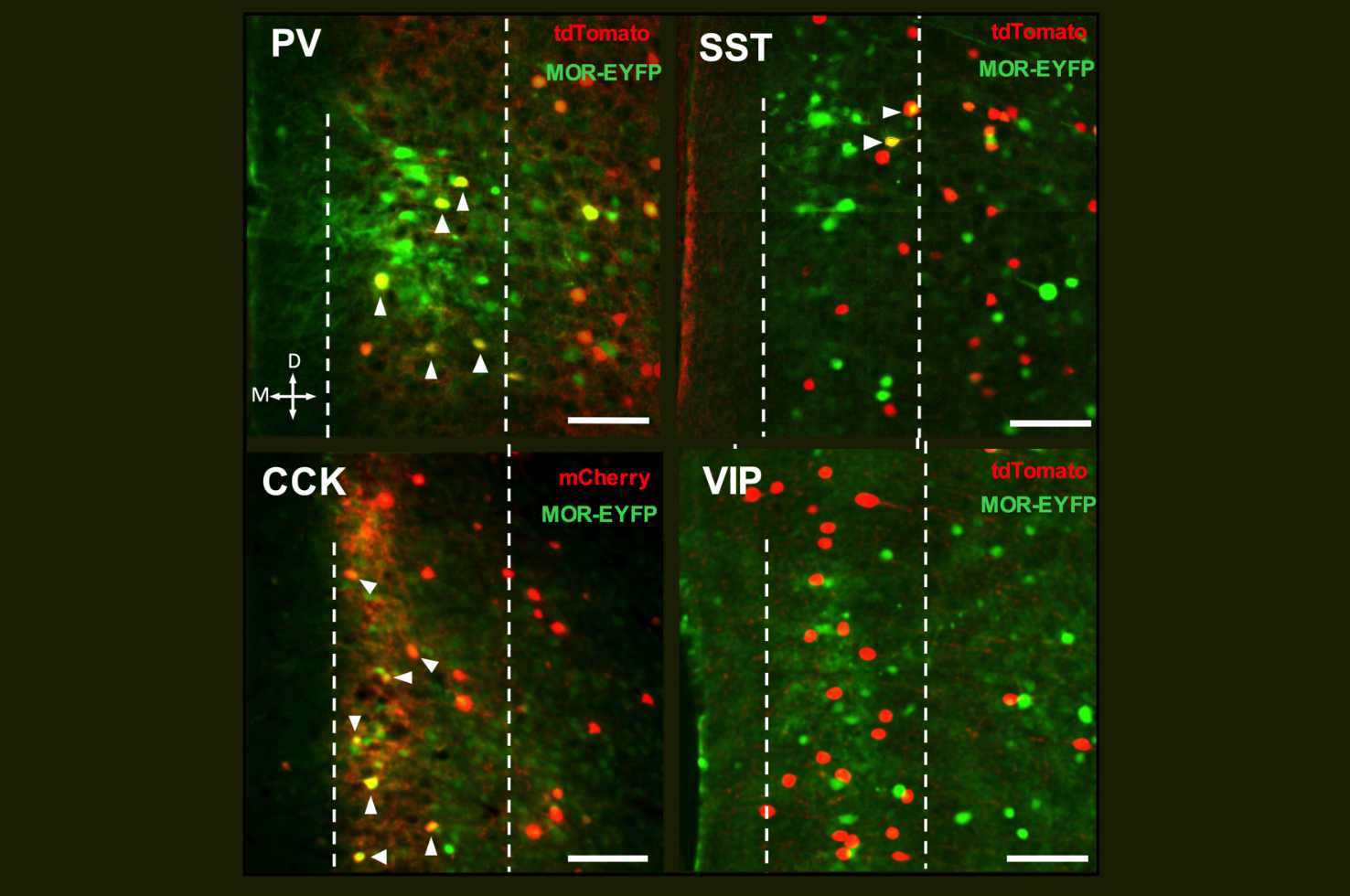Journal of Neuroscience: Opioid Receptors Modulate Inhibition within the Prefrontal Cortex Through Dissociable Cellular and Molecular Mechanisms

The prefrontal cortex is critical for regulating affective and motivational processing, and dysfunction of these processes is associated with psychiatric disorders including schizophrenia, major depressive disorder, and drug and alcohol use disorders. Because prefrontal cortex function is maintained by a diverse pool of GABAergic interneurons, the manipulation of prefrontal cortex interneurons has potential to effectively treat psychiatric symptoms.
To improve our understanding of the biological processes and signaling elements that regulate these circuits, scientists including Rebecca Cole, BA (graduate student); Marie-Charlotte Allichon, PhD (postdoctoral associate), and Max Joffe, PhD (Assistant Professor of Psychiatry), used whole-cell patch-clamp electrophysiology, optogenetics, and viral tools to examine how mu, delta, and kappa opioid receptors regulate the prefrontal cortex. “Specialized opioid receptors mediate the effects of endogenous neuropeptides and opioid narcotics like morphine and fentanyl,” said Ms. Cole, first author of the study, which was recently published in The Journal of Neuroscience. “The prefrontal cortex contains high levels of opioid receptors within GABAergic interneurons. Despite this unique feature, the role of prefrontal cortex opioid signaling at inhibitory synapses in the cortex is less well studied relative to other areas of the brain.”
The investigators found that mu, delta, and kappa opioid receptors differentially regulate inhibitory transmission depending on mode of inhibition, inhibitory input, and putative receptor localization. Across the receptor systems, delta opioid receptor activation is more effective at suppressing spontaneous inhibitory transmission in layer 2/3 of the prelimbic prefrontal cortex, while the mu opioid receptor causes a greater acute suppression of electrically evoked GABA release, and kappa opioid receptor plays a minor role in inhibitory transmission. Cell type-specific optogenetics revealed that mu and delta opioid receptors differentially regulate inhibitory transmission from parvalbumin, somatostatin, cholecystokinin, and vasoactive intestinal peptide-expressing interneurons. In addition, they demonstrated that the delta opioid receptor regulates inhibitory transmission through simultaneous pre- and postsynaptic modifications to interneuron physiology, whereas mu opioid receptor function varies between somato-dendritic or presynaptic signaling depending on cell type.
“These findings indicate that the delta opioid receptor has the strongest effect on reducing frontal cortex inhibition, and we suspect this action is critical for mediating the antidepressant-like effects of investigational delta opioid receptor agonists. Moving forward, we are very interested in determining how these systems are altered following opioid dependence, with the goal of developing new medications to treat opioid use disorder,” said Dr. Joffe, senior author of the study.
Opioid Receptors Modulate Inhibition within the Prefrontal Cortex through Dissociable Cellular and Molecular Mechanisms
Cole RH, Allichon MC, Joffe ME
Journal of Neuroscience 2 July 2025, 45 (27) e1963242025; DOI: 10.1523/JNEUROSCI.1963-24.2025
